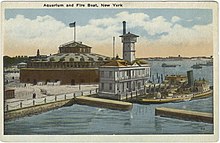Face it, we live in dark, pressing times.
It seems that society and its various institutions seek to ensnare you, pull you down, and reduce you to a insignificant cog in the machine.
You flip open the newspapers, and there’s yet another case of corruption, injustice and horrific crime.
Even we ourselves are not spared. How many of us had suffered some form of violation and abuse?
How many of us have coped with the past with substance addiction, alcoholism and throwing ourselves into our work?
But maybe your way of dealing is not so dramatic. Yet, how many of us instead settle for bitterness, unforgiveness and pettiness? Allowing these demons to chain us up.
That is why we believe the madness… Content to live a life of mediocrity, so that we can be shielded from further pain.
That we are content to let our goals and dreams be wasted, as long as we can maintain some kind of order, even if it results in numbness and lifelessness.
Then, we see those that seem to live life on their own terms.
Face it, we live in dark, pressing times.
It seems that society and its various institutions seek to ensnare you, pull you down, and reduce you to a insignificant cog in the machine.
You flip open the newspapers, and there’s yet another case of corruption, injustice and horrific crime.
Those people are not without problems or a past. Some of them even come from broken and abusive backgrounds.
And yet, they are able to be successful in whatever they do. They are star players in the office. They are in the pink of health. They raise up unbelievably obedient kids within an unbelievably loving marriage.
It was as if the weight of this screwed-up world slides off them effortlessly, like TEFLON. There are no shackles, no confines, only complete and utter freedom!
So… why do some people have it all while others stumble and crawl?
The answer is mind-bogglingly simple…
So let's go on to the anonymous Katy-Did Polka Letter, "Amico" to the spectacular conductor, Louis Jullien , friend of Hector Berlioz! In the good old days of 1853.
It seems that society and its various institutions seek to ensnare you, pull you down, and reduce you to a insignificant cog in the machine.
You flip open the newspapers, and there’s yet another case of corruption, injustice and horrific crime.
Even we ourselves are not spared. How many of us had suffered some form of violation and abuse?
How many of us have coped with the past with substance addiction, alcoholism and throwing ourselves into our work?
But maybe your way of dealing is not so dramatic. Yet, how many of us instead settle for bitterness, unforgiveness and pettiness? Allowing these demons to chain us up.
That is why we believe the madness… Content to live a life of mediocrity, so that we can be shielded from further pain.
That we are content to let our goals and dreams be wasted, as long as we can maintain some kind of order, even if it results in numbness and lifelessness.
Then, we see those that seem to live life on their own terms.
Face it, we live in dark, pressing times.
It seems that society and its various institutions seek to ensnare you, pull you down, and reduce you to a insignificant cog in the machine.
You flip open the newspapers, and there’s yet another case of corruption, injustice and horrific crime.
Those people are not without problems or a past. Some of them even come from broken and abusive backgrounds.
And yet, they are able to be successful in whatever they do. They are star players in the office. They are in the pink of health. They raise up unbelievably obedient kids within an unbelievably loving marriage.
It was as if the weight of this screwed-up world slides off them effortlessly, like TEFLON. There are no shackles, no confines, only complete and utter freedom!
So… why do some people have it all while others stumble and crawl?
The answer is mind-bogglingly simple…
IT’S ALL IN THE MIND! [End of Silva ad]
From Dr. Jordan Richman:So let's go on to the anonymous Katy-Did Polka Letter, "Amico" to the spectacular conductor, Louis Jullien , friend of Hector Berlioz! In the good old days of 1853.




